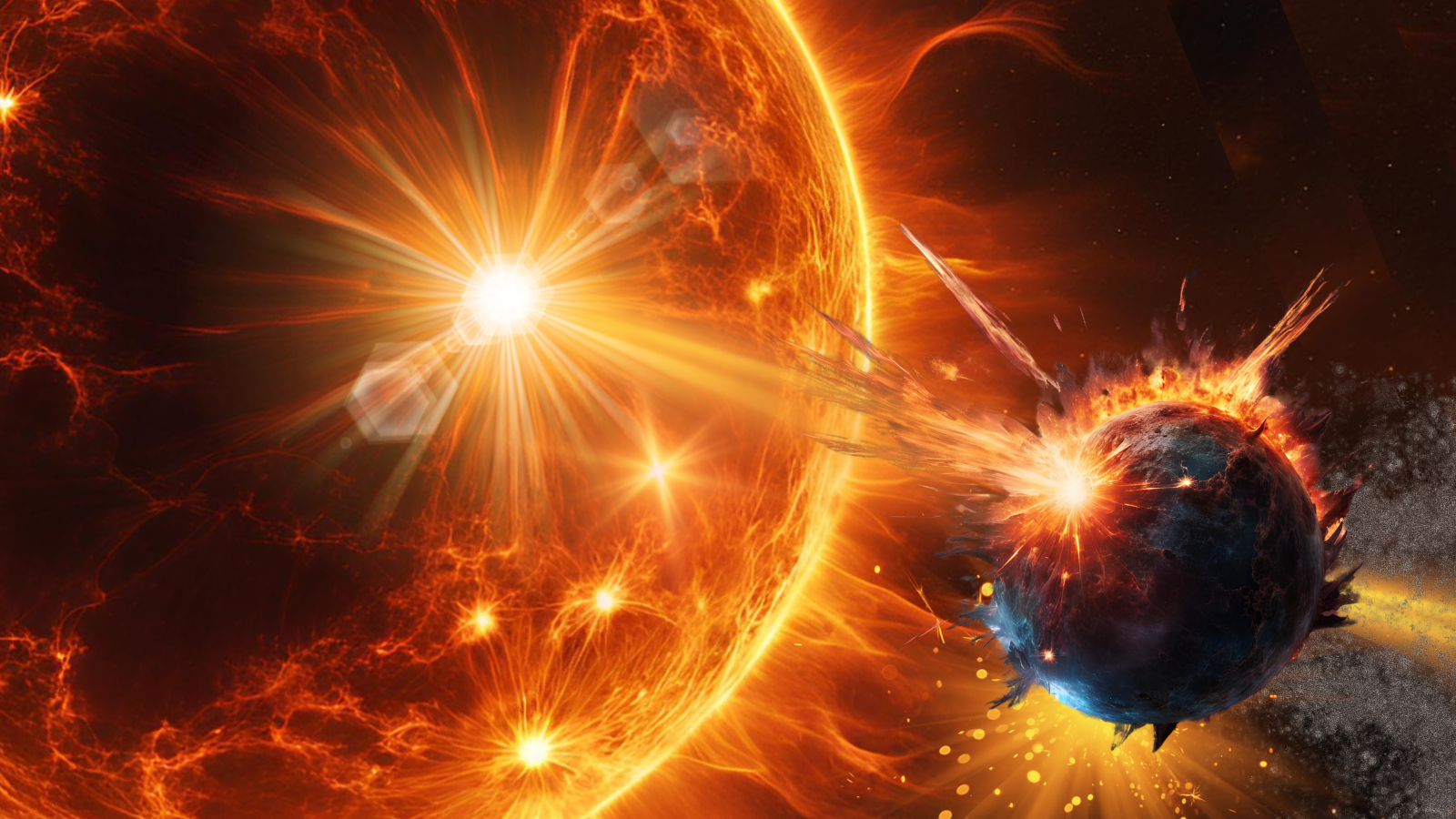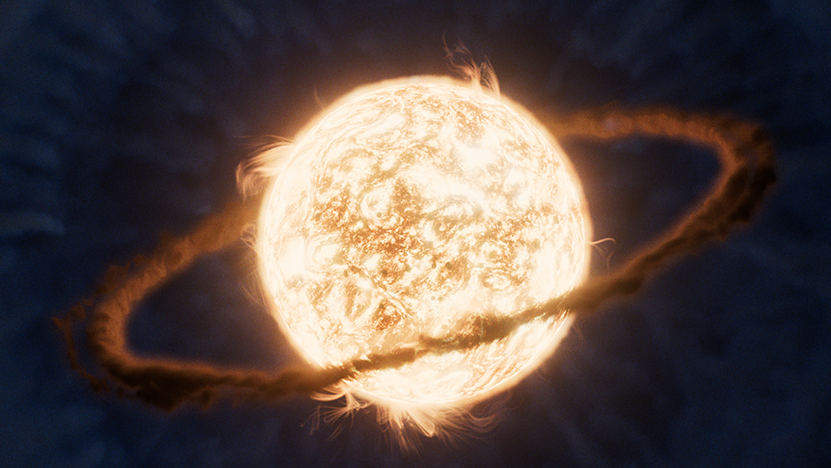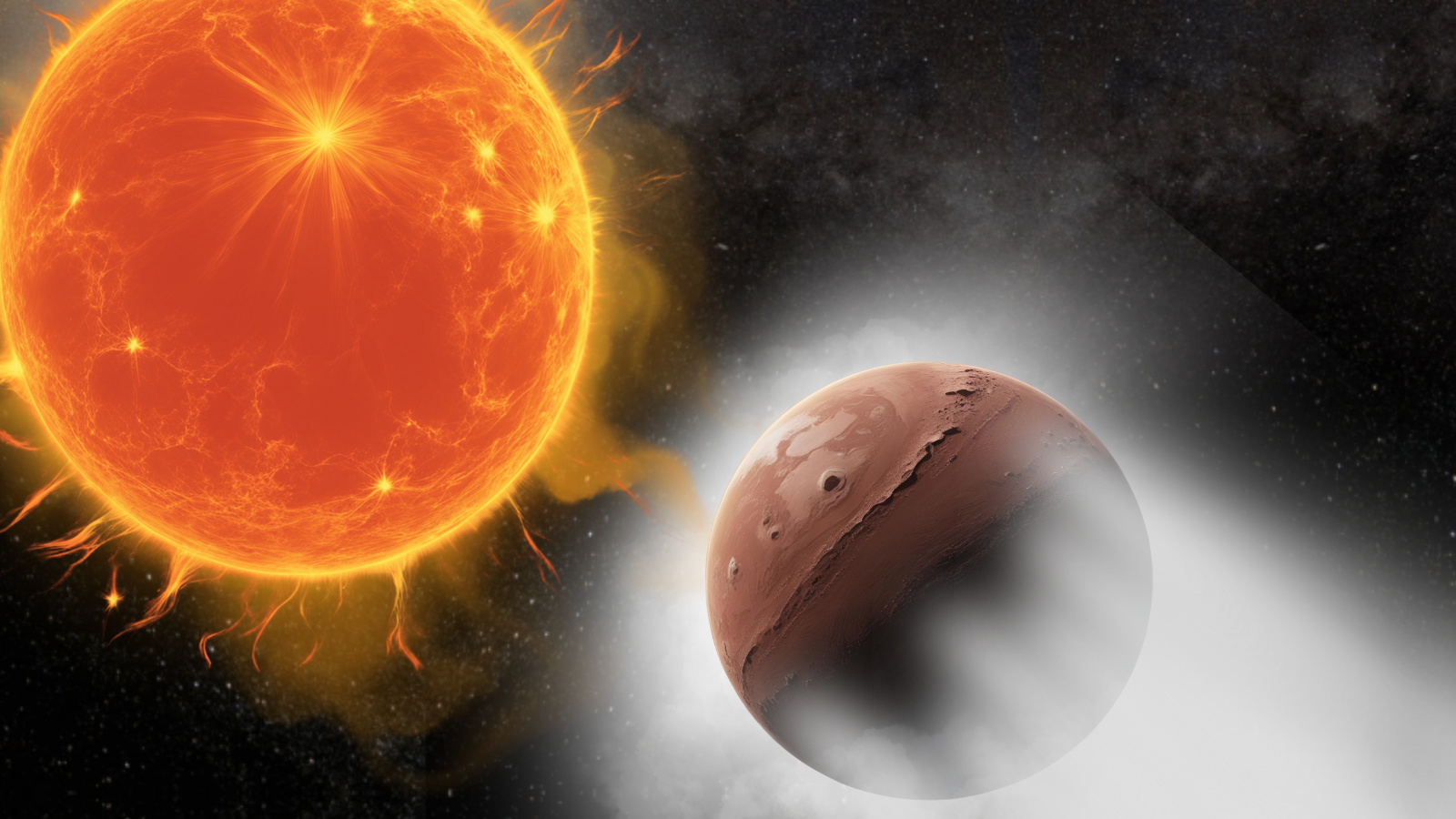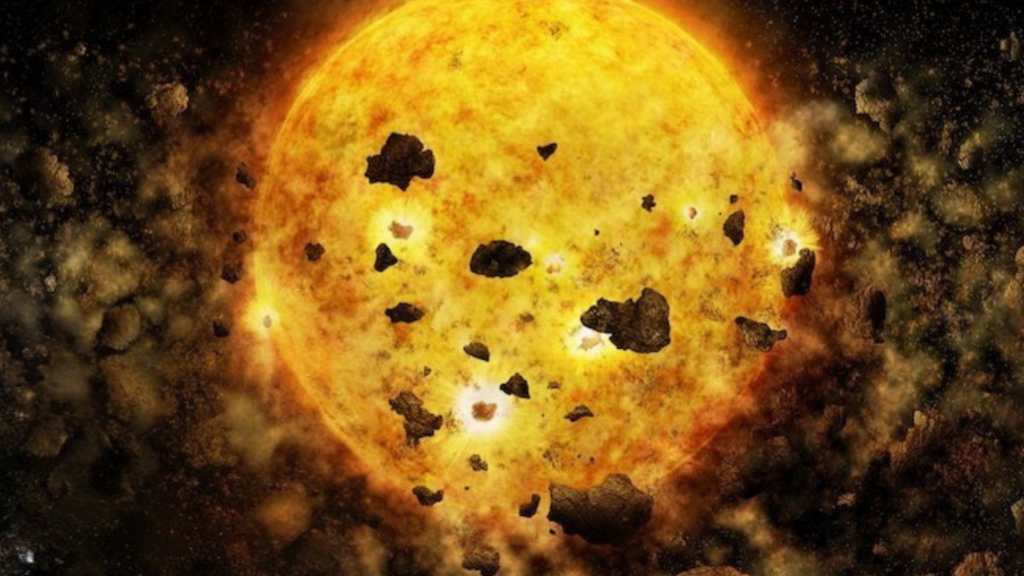A massive planet trapped in a death spiral around its star could unlock some of the secrets surrounding star systems. However, the fate of this world is not yet set in stone, with two deaths and one “rebirth” possible in its future.
The extrasolar planet or “exoplanet” in question is TOI-2109b, which has five times the mass of Jupiter and is located around 870 light-years from our solar system. The planet orbits so close to its parent star, TOI-2109, that it has a year that lasts just 16 hours.
These characteristics mean that TOI-2109b is classified as an “ultrahot Jupiter,” a rare class of planets that account for around 1 in 500 planets in the over 5,000 worlds in the catalog of known exoplanets. But TOI-2109b stands out even among those incredibly hot, star-hugging worlds.
“This is an ultra-hot Jupiter, and orbits much closer to its star than any other hot Jupiter ever discovered,” Macquarie University Research Fellow Jaime A. Alvarado-Montes said in a statement.“Just to put it into context, Mercury’s mass is almost 6,000 times smaller than Jupiter’s, but it still takes 88 days to orbit our sun.
“For a huge gas giant such as TOI-2109b to fully orbit in 16 hours, it tells us that this is a planet located super-close to its star.”
That makes TOI-2109b the perfect laboratory to study planets’ death spirals into their host stars, or more accurately, the phenomenon of orbital decay.
Related: Astronomers discover origins of mysterious double hot Jupiter exoplanets: ‘It is a dance of sorts’
The three deaths of TOI-2109b
Alvarado-Montes and colleagues set about investigating TOI-2109b using archival data from multiple telescopes, including NASA’s Transiting Exoplanet Survey Satellite (TESS) and the European Space Agency (ESA) space mission Cheops.
This constituted data regarding the transits of TOI-2109b across the face of its parent star from 2010 to 2024.
“Using all of the data available for this planet, we were able to predict a small change in its orbit,” Alvarado-Montes said. “Then we verified it with our theory and with our planet evolution models, and our predictions matched the observations. That’s quite exciting.”
The matching theoretical estimations and observational evidence suggested that the orbit of TOI-2109b will decay by around 10 seconds over the next three Earth-years. Though this is a tiny change, it proves TOI-2109b is spiraling toward its parent star.
The ultimate fate of TOI-2109b is uncertain, as there are three possible ways that this death spiral could play out.

The first and most dramatic final fate of TOI-2109b would see the ultrahot Jupiter plunge into its parent star. This will occur if the orbital decay of this planet begins to accelerate.
“The star will absorb it and kill it, of course, in the process – completely burn it, and the planet will disappear,” Alvarado-Montes said.
This would create a flash of light that is similar to ZTF SLRN-2020, a signal first observed in May 2020 when a gas giant planet plunged into its red giant stellar parent.

The second possible fate of TOI-2109b is slightly less dramatic, but no less catastrophic.
This would happen if the orbital decay of the planet continues unabated and sees the gravity of its parent star generate destructive tidal forces within the planet. These forces would literally rip TOI-2109b apart.
“The gravitational interactions are so strong that the planet starts being distorted,” Alvarado-Montes said. “It starts looking more like an elongated doughnut … the gravity of the planet is no longer able to hold its spherical shape.”
There is a third possible fate which would see the planet transformed rather than being destroyed.

In the third possible scenario for TOI-2109b, the intense radiation experienced by the ultrahot Jupiter strips away the planet’s gassy outer layers in a process called photoevaporation. This would expose the rocky inner core of TOI-2109b.
“As the planet gets even closer to the star, all of the gas molecules could start being dissociated, and the planet gets smaller and smaller,” Alvarado-Montes explained. “And if the planet shrinks quickly enough, then when the planet reaches the position where its Roche limit would have been, it’s not going to be five Jupiter masses anymore, but it will be small enough that the Roche limit moves closer to the star, so it could escape destruction.”
This could ultimately result in the creation of a rocky “super-Earth” around the size of Uranus or Neptune.
The team will continue to monitor TOI-2109b over the next three to five years, which should reveal the fate that will befall this doomed world.
The investigation of TOI-2109b has implications beyond its own fascinating and fateful situation. It provides astronomers the chance to study how hot Jupiters evolve and what happens when planets migrate toward their host stars.
“This planet and its interesting situation could help us figure out some mysterious astronomical phenomena that so far we really don’t have much evidence to explain,” Alvarado-Montes concludes. “It could tell us the story of many other solar systems.”
The team’s research was published July 15 in The Astrophysical Journal.
This article was originally published on Space.com.
